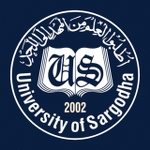The aim of the course is to make foundation for the students to understand, design and analyze an algorithm.
The main emphasis will be on three areas: algorithms, complexity of algorithms and understanding hard
problems interconnecting applications of mathematics to modern Technology. Many problems can be solved
by considering them as special cases of general problems while the general problems could be solved by
algorithms. Introducing the notion of an algorithmic paradigm, provides a general method for designing
algorithms. In crypto-graphic systems, the term key refers to a numerical value used by an algorithm to alter
information, making that information secure and visible only to individuals who have the corresponding key to
recover the information. Terminating algorithms require stopping criteria and convergence. Many numerical
algorithms such as Bisection and Newton-Raphson method have explicit rate of convergence. But still the
concept of Turing machine is needed to understand to deal with Halting problems.
Contents:
Introduction of Algorithms
Searching and Sorting techniques
Growth of a function
Big-O Notation
Big-O Estimates for Some Important Functions
Growth of Combinations of Functions
Big-Omega and Big-Theta Notation
Estimating Complexity of algorithm
P versus NP problem
Floating Point Arithmetic
Modular Arithmetic
Integer Representations and Algorithms
Introduction to cryptography
Digital signatures
Concept of Turing Machines
Recommended Texts
Kenneth H. Rosen. (1999). Discrete Mathematics and its Applications (8 th ed.). McGraw Hill, New York
Muller J.-M., Brisebarre N., de Dinechin F. (2010) Handbook of Floating-Point Arithmetic Cambridge, MA:
Birkhäuser Boston
Suggested Readings
Bovet, D. P., Crescenzi, P., & Bovet, D. (1994). Introduction to the Theory of Complexity (Vol. 7). London:
Prentice Hall.
Greene, D. H., & Knuth, D. E. (1990). Mathematics for the Analysis of Algorithms (Vol. 504). Boston:
Birkhäuser.
Parberry, I. (2000). Lecture Notes on Algorithm Analysis and Computational Coomplexity. University of
North Texas


